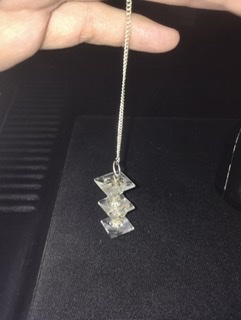Pendulum Method
If your internal communication seems vague or you are uncertain whether it's reliable, this is a method for getting information from your body, unconscious, and system mates without thinking maybe you're just hearing or influencing your own thoughts.

This method generally uses a string or a chain and a heavier object that are balanced to be neutral. There are crystal pendulums you can purchase (like the one shown), or you can make your own. If you have trouble with spiritual information, be careful when searching on making your own pendulum; some use this for spiritual or religious purposes.
Take answers using this method with a grain of salt, and always do a quick "litmus test" to make sure that your answers today are the same as your answers on other days (i.e. which direction means which answer can change).
- Lay a piece of paper out in front of you, and draw a large circle on it.
- Then draw a line from the top to the bottom and a line from the left to the right on the paper.
- One settles one's elbow (generally speaking, use your "off" hand or left if you're ambidextrous or uncertain) firmly on the table with the arm pointing upwards, and allow your wrist to dangle, which holds the string.
- Hold the string pinched between thumb and forefinger (if possible, with the string running over the back of your fingers and passing between your pinky and ring finger loosely.
- Make sure the object is floating a few centimeters over the paper.
- Holding your arm still and relaxed, make sure you stop the object from swinging.
- Then perform the litmus test using the motion of the object to determine what is yes, no, maybe. Essentially: ask yourself a few questions to determine which direction the pendulum swings for yes, no or maybe. For example, the pendulum might swing away and towards your body for yes, from side to side for no and around in circles for maybe. That's the general idea. If you wish, you can mark the paper with these answers, or you can eventually discard the paper if this method becomes reliable.
Now you can play 20 questions with yourselves.
